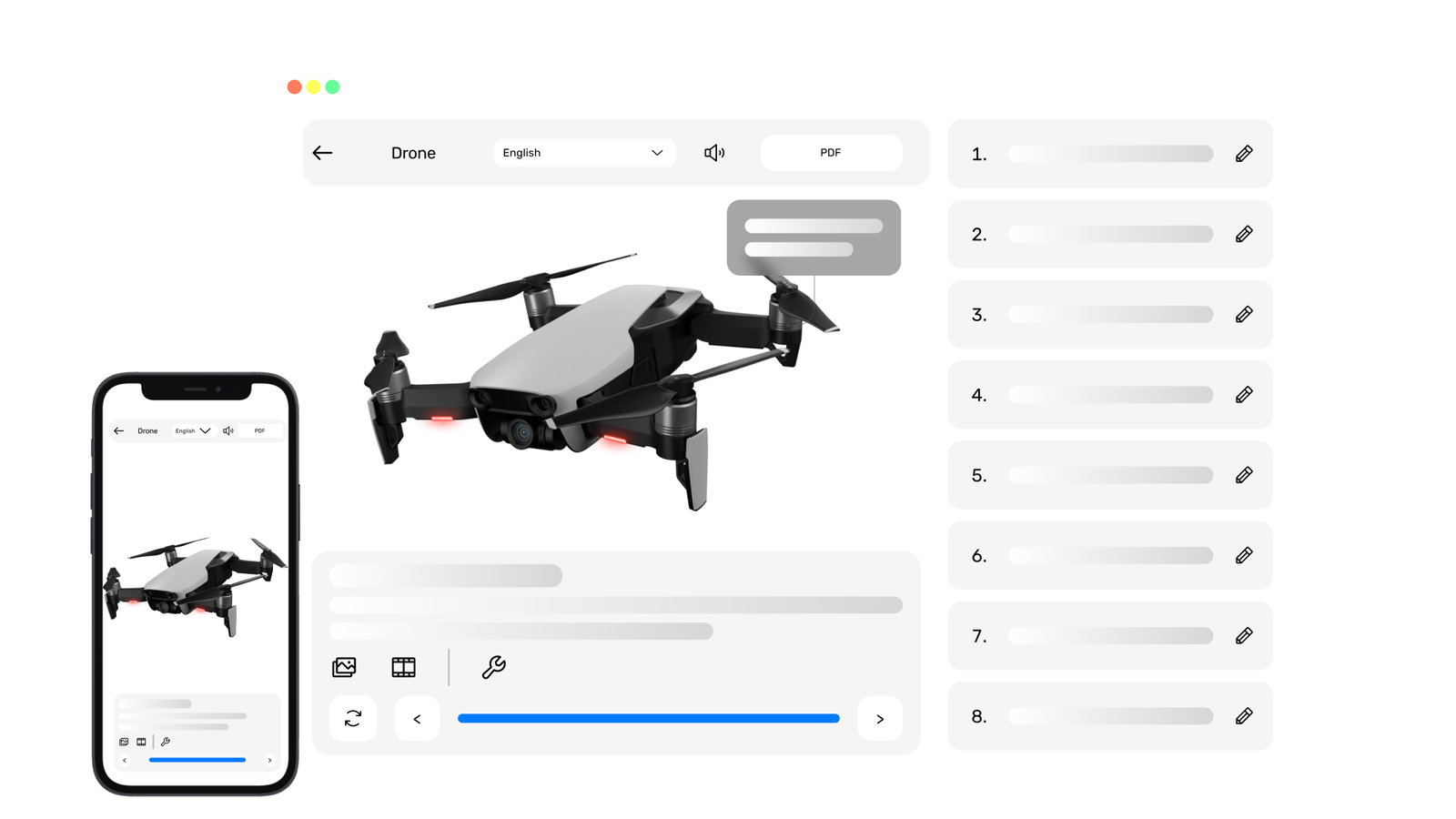Understanding the Limitations of Traditional Manuals
Traditional manuals, often in printed or static PDF formats, present several challenges:
- Lack of Engagement: Static text and images can be monotonous, leading to disengagement and reduced retention among users.
- Difficulty in Updates: Updating printed manuals is cumbersome, often resulting in outdated information being in circulation.
- Limited Access: Physical manuals can wear out and are often difficult to access in certain work environments.
The Advantages of Interactive Instructions
Transitioning to interactive instructions offers numerous benefits:
- Enhanced Engagement: Interactive content, such as clickable links, embedded videos, and animations, makes information more engaging and easier to understand.
- Ease of Updates: Digital platforms make it easy to update procedures, eliminating nearly all associated costs and turnaround time delays.
- Improved Access: Users can access digital manuals on computers, tablets, and smartphones, making them available anytime and anywhere.
Use Cases for Interactive Instructions in Process Optimization
Implementing interactive instructions can significantly streamline technical processes:
- Assembly Procedures: Interactive 3D models can guide users through complex assembly tasks, reducing errors and improving efficiency.
- Maintenance Tasks: Augmented Reality (AR) can overlay instructions directly onto equipment, providing real-time guidance and reducing downtime.
- Training Simulations: Virtual training simulations offer hands-on practice in a controlled environment, enhancing skill acquisition and retention.
Comparing Costs and ROI: Traditional vs. Interactive Documentation
Investing in software solutions for digital instructions can yield substantial returns through improved performance and reduced operational costs:
- Reduced Training Time: Interactive materials can accelerate the learning process, allowing users to become proficient more quickly.
- Decreased Error Rates: Clear and engaging instructions lead to fewer mistakes, reducing rework and associated costs.
- Scalability: Digital instructions can be easily scaled across multiple locations and updated centrally, eliminating localization costs.
Instantly Transform Traditional Documentation into Interactive Instructions with StepWorks
StepWorks’ AI-powered solution makes it easy for organizations of any size to adopt and implement interactive instructions. StepWorks is the only solution that transforms your existing 3D models and written instructions into fully interactive procedures, automatically. With its remarkable speed, you can create interactive procedures in just minutes.
Conclusion
Transitioning from traditional manuals to interactive instructions is a strategic move that can lead to significant improvements in training and process optimization. By embracing modern instructional methods, organizations can enhance engagement, reduce errors, and achieve greater operational efficiency.
Ready to revolutionize your training materials? Try StepWorks for free today and experience the benefits of interactive instructions firsthand.

